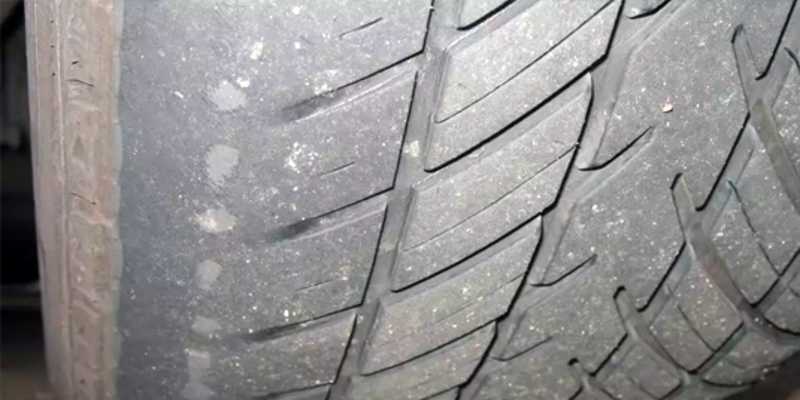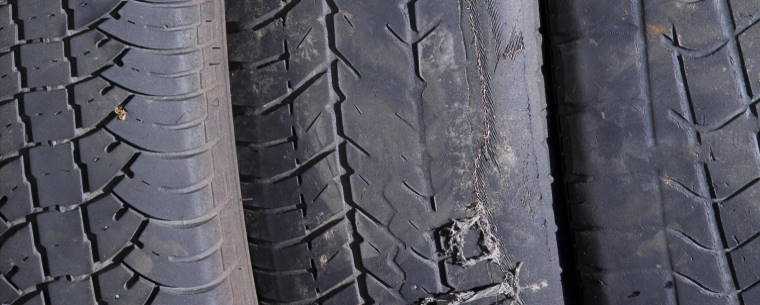Your car tyres are much important for the safety and performance of your vehicle. Tyres with worn-out treads have poor road grip. They can reduce vehicle handling and increase the risk of accidents. Moreover, driving with worn-out tyres can also lead to hefty fines and legal consequences. Thus, it is essential to keep your vehicle tyres in good condition, you should have to know when to replace them.
There are various aspects that can impact the tyre treads such as the tyre’s quality, type, driving conditions and your driving style. So, due to these factors, your vehicle’s tyre lifespan can vary.
In the USA, the legal tread depth limit is 2/32 inches, which is approximately 1.6mm. Therefore, if the tyre tread depth is less than 2mm, it’s time to replace them. In this article, we will discuss how long 2mm tyre tread can last and its implications.
How Long Will 2mm Tyre Tread Last
The lifespan of a 2mm tyre tread depends on several factors such as driving style, road conditions, and tire quality. However, on average, a tyre with 2mm tread depth can last up to 10,000 miles.
This distance can vary depending on the factors mentioned above, but it is essential to monitor your tyre tread depth regularly to ensure your safety on the road.
Factors Affecting the Lifespan of 2mm Tyre Tread
Following are the factors that affect 2mm tyre tread:
Driving Style
Your driving style can have a significant impact on the lifespan of your vehicle’s tyre tread. Aggressive driving, such as speeding, harsh braking, and accelerating can wear out your tyre tread faster than normal driving.
Therefore, it is recommended to drive within the speed limit, brake gently, and accelerate smoothly to make your vehicle’s tyre long life.
Road Conditions
The condition of the road surface can also affect the lifespan of your tyre tread. Rough and uneven roads, sharp turns, and potholes can cause significant wear and tear to your tyre tread. Driving on wet or icy roads can also reduce the period of your tyre tread.
So, it is recommended to avoid driving on rough and uneven roads. You should drive carefully on wet or icy roads for your safety and your vehicle’s tyre too.
Tyre Quality
The quality of your car tyres can also affect the lifespan of your tyre tread. Premium tyres with high-quality rubber compounds tend to last longer than low-quality tyres. It is recommended to invest in high-quality tyres to ensure their durability and longevity.
Maintenance
Regular maintenance of your car tyres can also prolong their life period. Checking the tyre pressure, balancing and aligning the wheels, and rotating the tyres regularly can ensure 2mm Tyre Tread Lifespan. By following the manufacturer’s recommended maintenance schedule you can keep your tyres in good condition.
Disadvantages of Worn-out Tyres
Worn-out tyres can pose several disadvantages that can affect your driving experience and safety. Worn-out tyres do not have adequate tread depth, which reduces their ability to grip the road surface.
This means that they are more likely to skid or slide, especially in wet or icy conditions. They can also affect the handling and braking performance of your vehicle and increase the risk of accidents.
Driving with them can also cause uneven wear, leading to tyre damage, such as bulges, cuts, and punctures. Furthermore, worn-out tyres can also affect the fuel efficiency of your car, as they require more energy to move and maintain speed.
Good Tyres with Legal Tread Limit
Having good tyres with the legal tread limit is crucial for your safety and the performance of your car. Tires with a tread depth of 2mm or more are considered to be in good condition and provide adequate road grip. It is recommended to replace your tyres when the tread depth reaches 2mm to avoid any risks.
Any tyres with a tread depth below this limit are considered illegal and can result in hefty fines and legal consequences.
Conclusion
Keeping your tyres in good condition is crucial for your safety on the road, the performance of your car, and avoiding any legal consequences. Worn-out tyres can affect the handling and braking performance of your vehicle. They can also increase the risk of accidents and affect the fuel efficiency of your car.
Therefore, it is recommended to check your tyre tread depth regularly, drive within the speed limit, brake gently, and accelerate smoothly to preserve your tyre tread. Avoid driving on rough and uneven roads. Do invest in high-quality tyres and follow the manufacturer’s recommended maintenance schedule for keeping your vehicle’s tyre in lush condition.
FAQs
Can I still drive on my tyre with a 2mm tread?
It’s legal to drive on a tyre with 2mm tread, but it’s not recommended. Tyres with low tread depth have poor grip on wet roads and can increase the stopping distance of your vehicle, making it more difficult to control.
How often should I check my tyre tread depth?
It’s recommended to check your tyre tread depth at least once a month. You can use a tread depth gauge to measure the depth of the tread grooves. If the tread depth is less than 3mm, it’s time to consider replacing your tyres.
What are the signs that my tyres need replacing?
Some signs that your tyres need replacing include uneven wear, cracks or bulges on the tyre sidewalls, vibration while driving, and poor grip on wet roads. If you notice any of these signs, it’s best to get your tyres checked by a professional.
What happens if I continue to drive on my tyres with low tread depth?
Driving on tyres with low tread depth can be dangerous, especially on wet roads. The risk of hydroplaning increases, which means that the vehicle may slide uncontrollably on the road. Low tread depth can lead to poor handling and longer stopping distances.
Can I replace only one tyre if the others have sufficient tread depth?
It’s possible to replace only one tyre but it’s not recommended. Mismatched tyres can cause handling problems, reduce stability and may lead to uneven wear on the tyres. It’s best to replace all four tyres at the same time.
How can I prolong my tyre life period?
You can prolong the life of your tyres by maintaining the correct tyre pressure, rotating the tyres regularly, avoiding overloading the vehicle, and driving at a reasonable speed. Avoiding sudden acceleration and hard braking can help to reduce tyre wear.
How do I dispose of my old tyres?
It’s illegal to dispose of tyres in a landfill or by burning them. You can take your old tyres to a tyre retailer, who will dispose of them safely and responsibly. Some retailers may charge a small fee for this service. Alternatively, you can contact your local council for advice on tyre disposal.



